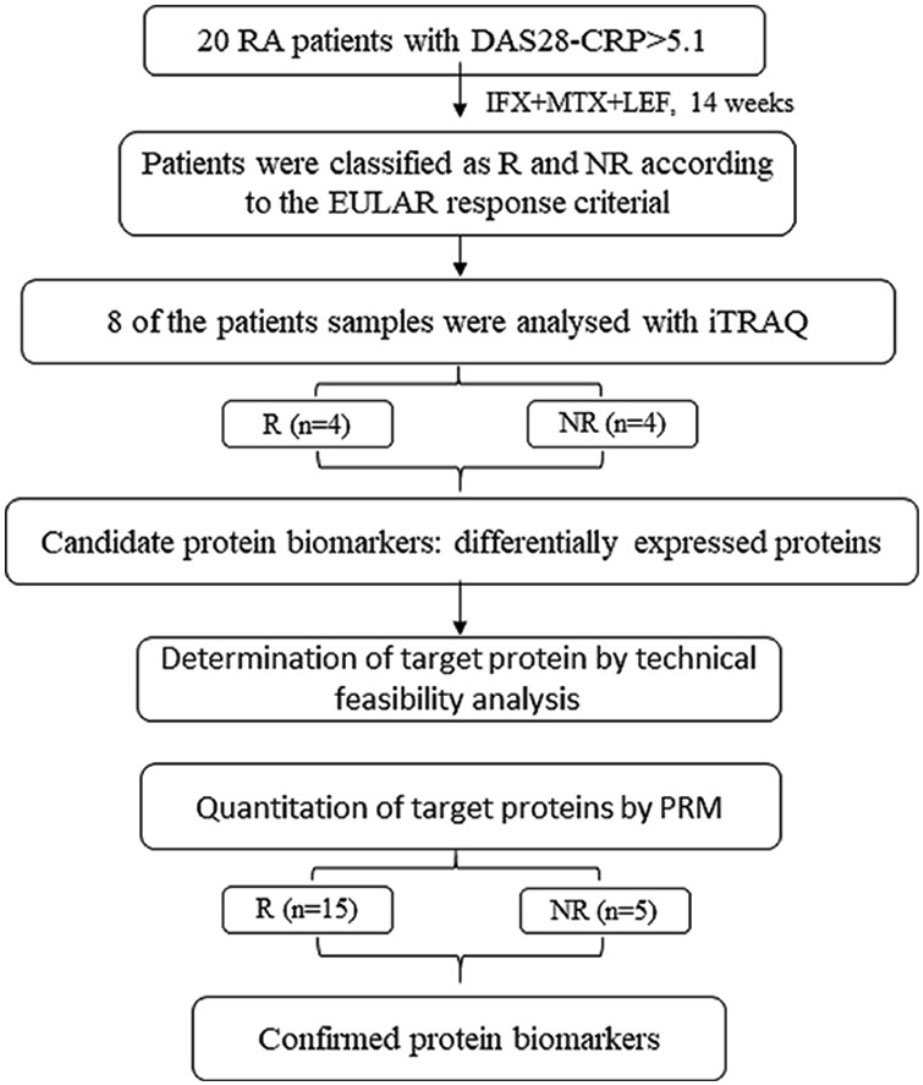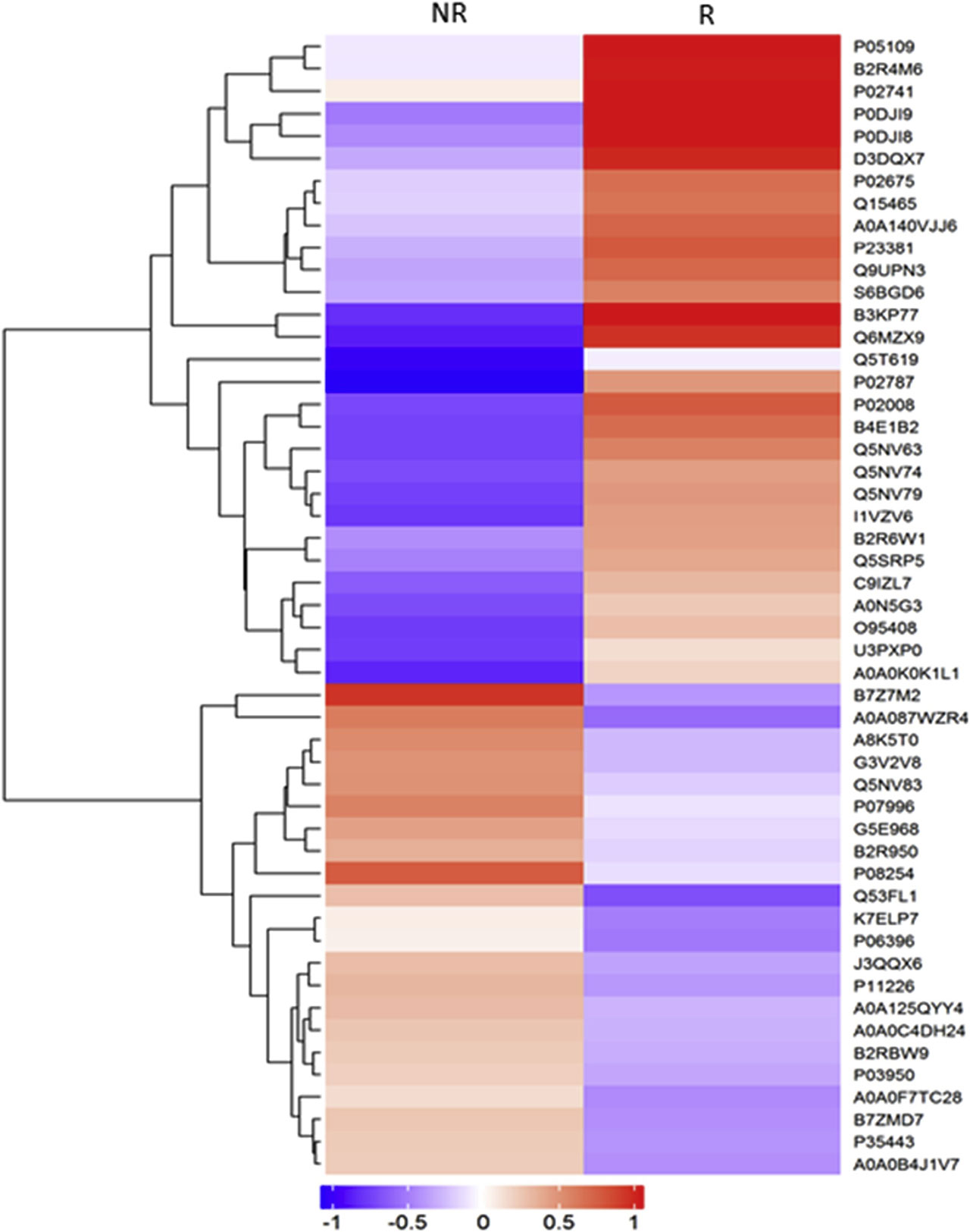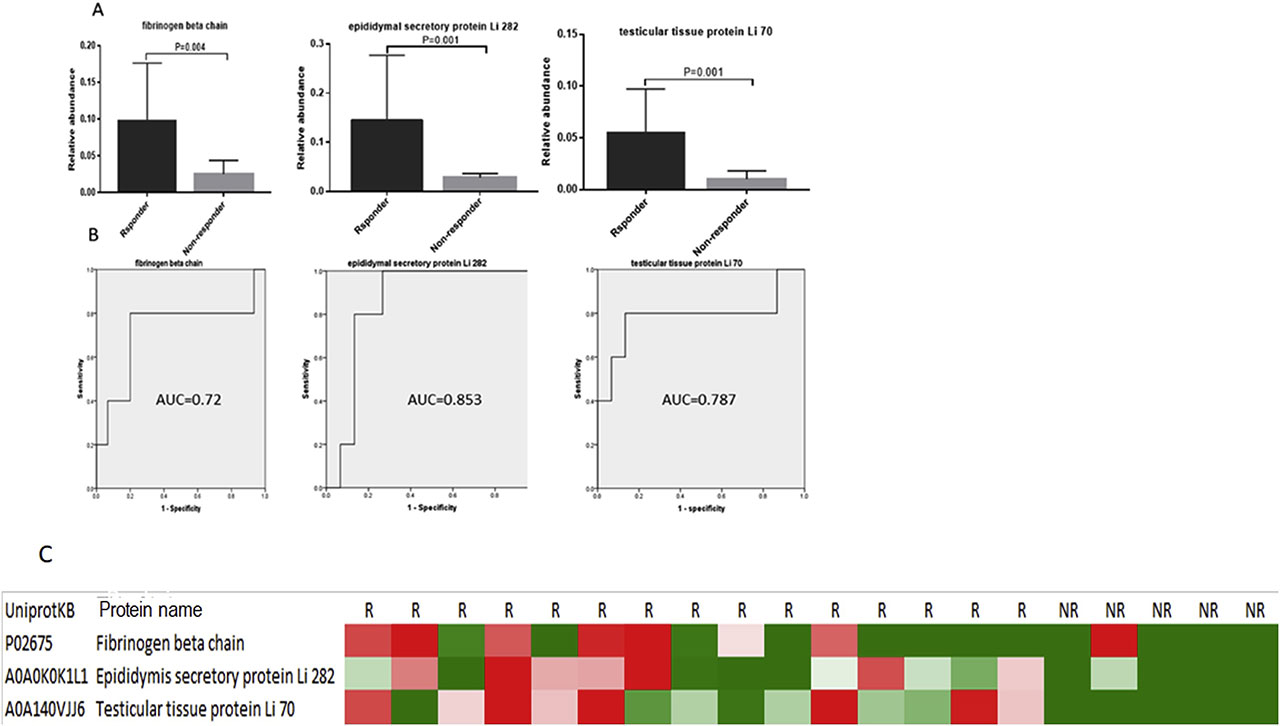Session Information
Session Type: Poster Session (Tuesday)
Session Time: 9:00AM-11:00AM
Background/Purpose: Patients with rheumatoid arthritis (RA) usually receive triple therapy with methotrexate (MTX), leflunomide (LEF) and infliximab (IFX), but nearly one-third of them do not respond to triple therapy. This study aimed to identify biomarkers for predicting the efficacy of triple therapy to optimize personalized treatment of RA.
Methods: All 20 enrolled patients met 2010 ACR/EULAR criteria for RA and were classified into good, moderate and non-responders (GR, MR, NR) for triple therapy. The Responders (R) were defined as the sum of GR and MR. Protein profiles of 4 responders and 4 non-responders were investigated via isobaric tags for relative and absolute quantification (iTRAQ), and differentially expressed proteins (DEPs) with high-confidence peptides were validated in 15 responders and 5 non-responders by parallel response monitoring (PRM).
Results: iTRAQ identified 51 DEPs between responders and non-responders (p < 0.05, fold change > ± 1.2).The top five up-regulated DEPs were B7Z7M2, A0A087WZR4, Q53FL1, P08254 and G3V2V8, while the top five down-regulated proteins were Q6MZX9, B3KP77, P0DJI9, P0DJI8 and P02787. Targeted mass spectrometry by PRM identified 10 candidate biomarkers, and 3 DEPs including fibrinogen beta chain, epididymal secretory protein Li 282 and testicular tissue protein Li 70 were confirmed as predictive biomarkers.
Conclusion: This study demonstrated the feasibility of exploring biomarkers by applying iTRAQ and PRM mass spectrometry techniques, and a panel of biomarkers were identified to predict clinical response of IFX+MTX+LEF treatment in active RA patients.
This project was supported by the National Natural Science Foundation of China (No.81571599).
To cite this abstract in AMA style:
Chen J, Tang M, Xu L, Li S, Ge Y, Tian J, Xie X, Chen J, Du J, Li F. Protein Biomarkers Predicting the Response to IFX+MTX+LEF Treatment in Patients with Rheumatoid Arthritis [abstract]. Arthritis Rheumatol. 2019; 71 (suppl 10). https://acrabstracts.org/abstract/protein-biomarkers-predicting-the-response-to-ifxmtxlef-treatment-in-patients-with-rheumatoid-arthritis/. Accessed .« Back to 2019 ACR/ARP Annual Meeting
ACR Meeting Abstracts - https://acrabstracts.org/abstract/protein-biomarkers-predicting-the-response-to-ifxmtxlef-treatment-in-patients-with-rheumatoid-arthritis/



